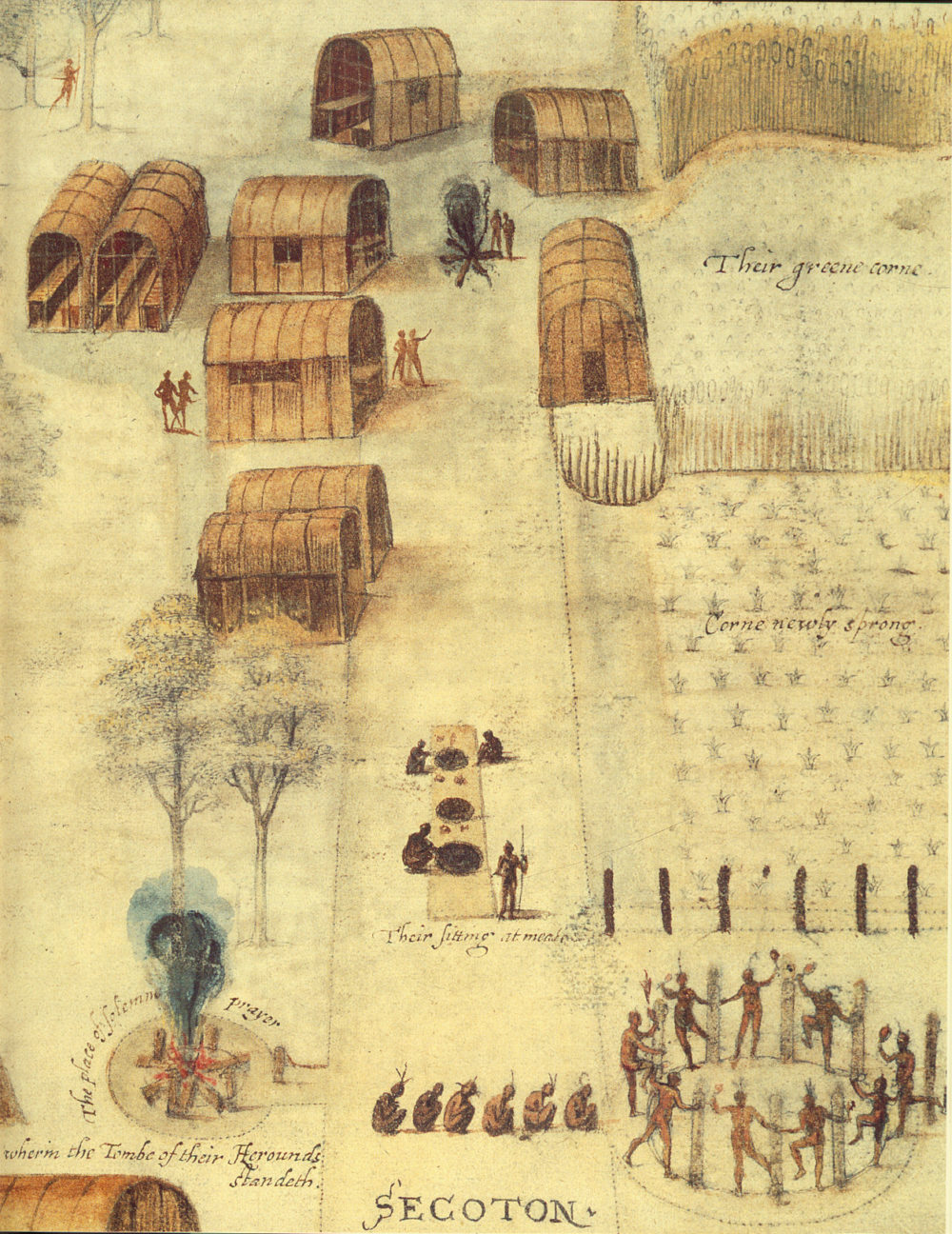
John White, “Village of the Secotan, 1585, via Wikimedia.
Native settlements were usually organized around political, economic, or religious activity. John White shows this Algonquin community engaged in some kind of celebration across from the fire he identified as “The place of solemne prayer,” indicating that ceremonial activity could be both solemn and raucous. In the center of the image, a communal meal has been laid alongside crops that are in varying stages of growth, suggesting the use of planting techniques like crop rotation. He also shows the interior of several longhouses, made of bent saplings and covered with bark and woven maps. Among the Powhatan, similar structures were called yehakins. In putting the longhouses and the settlement in a series of rows, White’s English perspective comes through: archaeological evidence shows that these houses were usually situated around communal gathering places or moved next to fields under cultivation not ordered in European-style rows.